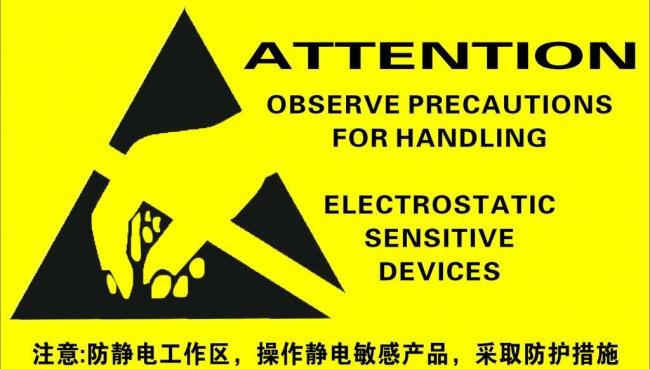Introduction to anti-static fabrics – What are anti-static fabrics? The role of anti-static fabrics in our daily lives and industrial development.

Anti-static fabric, as the name suggests, is a fabric that prevents the occurrence of static electricity. First, let us first understand what static electricity is and what impact static electricity will have on us?
What is static electricity: It is a kind of charge in a static state or a non-flowing charge (flowing charge forms an electric current). Static electricity is formed when charges accumulate on an object or surface, and charges are divided into positive charges and There are two types of negative charges, that is to say, the electrostatic phenomenon is also divided into two types, namely positive static electricity and negative static electricity. Autumn is coming soon, and the climate is getting drier. Static electricity is everywhere around us. The static electricity on people’s bodies is mainly generated by the clothes they wear. Clothes of different materials will produce different static electricity. Some chemical fiber clothes are more Static electricity is generated, and some cotton clothing generates relatively little static electricity. There are even some fabrics that can completely prevent the generation of static electricity. These are anti-static fabrics.
Hazards of static electricity: There are many hazards of static electricity. Let us first talk about the hazards of static electricity from the static electricity in our lives. The human body is exposed to static electricity radiation for a long time, which can cause a series of problems such as restlessness, headache, palpitation, difficulty breathing, coughing, etc. These are just static electricity that exists in our lives. Maybe we can’t feel how big a threat it is, so let’s take a look at its hazards in industry. In the 10 years from 1962 to 1971, there were about 100 fire accidents caused by static electricity every year. In the process of petrochemical production, storage and transportation, static electricity has caused major fire and explosion accidents. From 1960 to 1975, there were 116 fire and explosion accidents caused by static electricity in the U.S. petrochemical industry. In July 1967, an aircraft aboard the U.S. Forrestal aircraft carrier suffered an electrostatic fire caused by a defective missile shielding connector, causing $72 million in losses and 134 casualties. These accidents are still happening. Who would have thought that seemingly tiny static electricity could have such a destructive power? And with the advancement of science and technology and the popularization of microelectronics, these high-tech products are afraid of static electricity. Small static electricity often causes immeasurable losses. It can be seen that static electricity must be guarded against.
Antistatic fabric:AntiWhat is electrostatic fabric? During the remanufacturing process, fiber materials (wool, nylon, polyacrylonitrile fiber, polyethylene glycol, sodium alkyl sulfonate, etc.) are properly matched according to the charging sequence to remove the effects of static electricity. There are many types of antistatic fabrics, which are divided into two categories according to different processes; Category: antistatic fabrics obtained by surface treatment of plants with antistatic agents; Category II: antistatic fabrics obtained directly through manufacturing processes. For chemical fibers, in the chemical fiber manufacturing process, the copolymerization method is used in the polymerization stage Antistatic agents are introduced and fibers with antistatic effects are made by spinning. In addition, conductive fibers are woven into fabrics based on various fibers to achieve antistatic effects on the fabrics. Conductive fibers are divided into metallic and non-metallic types. Metal type such as stainless copper fiber. It is blended with other fibers into chemical fiber fabrics and then woven into yarn; non-metallic conductive fibers are generally based on polymer organic fibers and are processed to achieve a specific resistance of 102-105Ω·cm; this fiber is Chemical fiber fabrics are blended with tissues and other fibers in a certain proportion to achieveGet the effect of removing static electricity.
Standards for anti-static work clothes: Static-free work clothes are used Work clothes made of static polyester card and other fabrics. The conductive mechanism is that the fabric yarn contains a certain proportion of conductive yarn, and the conductive yarn is made of a certain proportion of stainless steel fiber or other conductive fiber and general fiber blended chemical fiber fabric. Remove static electricity from workwear through corona discharge and leakage of conductive fibers. Since stainless steel fiber is a metal fiber, the conductive properties of the antistatic fabric woven from it are stable and do not change with the number of times the work clothes are washed.
Charged charge density<7μc/m2; Frictional charge quantity <0.6μc/piece; Cleaning times: A level > 100 times; B level > 50 times. All indicators are better than the requirements of national standards
–The largest supplier of functional fabrics in the country and northwest, and a professional fabric protection expert with more than ten years of experience. Our company’s anti-static fabrics are made of new conductive fibers and cotton fibers through advanced spinning equipment and weaving processes, as well as printing and dyeing. They are divided into three categories: pure cotton, polyester-cotton, and chemical fibers. The fabric has good durability and anti-static function, and is also dust-proof, washable, and dry-cleaning resistant. Fabric fabrics usually adopt twill or plain weave, which combines fashion and functionality while having the special effects of softness, comfort and good breathability. This fabric complies with the national standard GB 12014 “Antistatic Workwear” and is an ideal fabric for functional antistatic workwear. It is suitable for labor protection and decorative cloth in places with electrostatic hazards such as petroleum, chemical industry, electronics, coal mines, etc.
AAAFSGRETEGSDFW
Disclaimer:
Disclaimer: Some of the texts, pictures, audios, and videos of some articles published on this site are from the Internet and do not represent the views of this site. The copyrights belong to the original authors. If you find that the information reproduced on this website infringes upon your rights, please contact us and we will change or delete it as soon as possible.
AA




